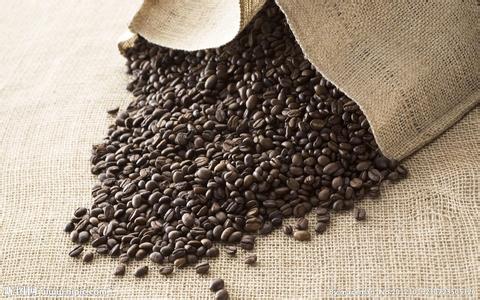Coffee etiquette: coffee must be seen.

Going to a coffee shop to taste coffee is a daily necessity for most foreigners, so it's not a big deal. The purpose of going to a coffee shop is mostly just to chat, so it's easy.
But if you go to the cafe for business, personal manners and manners are very important. It may be important to have some unwritten traditional courtesy of coffee, such as not to keep talking about the cup all the time, or to run around the house with coffee, and to put the cup down; and, do not add sugar or cream to other people's coffee without asking for permission, and do not pour coffee for yourself or others without the consent of the hostess when you are a guest in another person's house, because it is the hostess's duty and right.
When drinking Cappucciono, it is best to use a spoon to mix the milk foam with coffee, first taste the milk, and then taste the coffee, so as not to turn into a "big beard" after drinking Cappucciono. If you are invited to a family-style coffee for the first time, you should at least bring a bouquet of flowers. All the thanks are in the flowers, so there is no need to indicate otherwise.
How to enjoy a good cup of coffee
The delicacy of coffee always coexists with a warm heart. enjoying a good cup of coffee in the right way will not only make it easier to appreciate the taste of coffee, but also live up to the heart of the brewer, and it will make you look very cultured. A good cup of coffee should be clear and bright with a strong sense of transparency. Concentration and turbidity are different. Generally speaking, the causes of coffee turbidity are nothing more than the following:

Mix in defective coffee beans
Poor baking
Coffee beans or powder have been kept for too long
Excess brewing (the brewing temperature is too high, the brewing time is too long, the way of flushing is too rough.) When you put a spoon into a good coffee, the light of the spoon will sparkle; then scoop up and drip back, you will find that at the moment of falling, the coffee liquid will form a jewel-like bead across the surface, which can be called a cup of moist and transparent coffee.
Small steps when drinking coffee
1. Take a sip of cold water to clean your mouth.
2. Please drink coffee while it is hot, because the tannin in coffee is easy to change in the process of cooling, and the taste becomes sour, which naturally affects the flavor of coffee.
3. Take a sip of black coffee, and every cup of coffee you drink takes five years to blossom and bear fruit. It goes through complicated procedures such as harvesting, roasting and so on, coupled with the careful preparation of coffee brewers. Therefore, drink a sip of black coffee without sugar and cream while it is hot, and feel the flavor of the coffee before applying fat powder. Then add the right amount of sugar, take another sip, and finally add cream. Don't forget to have a sip of plain coffee first.
4. before you officially start drinking coffee, take a sip of ice water, which can help the coffee taste emerge brightly, so that every taste bud on the tongue is fully prepared to taste the coffee.
5, drink the right amount, coffee contains caffeine, so drink the right amount!
Enjoy a good cup of coffee according to the above process, you can not only experience the different levels of coffee taste, but also help to improve the ability to appreciate coffee.
Special attention should be paid to some coffee etiquette:
(1) how to get the coffee cup?
The coffee you drink after a meal is usually served in a pocket cup. The ear of this kind of cup is so small that you can't get your fingers out. But even if you use a larger cup, don't put your finger through the ear and carry the cup. The correct way to hold a coffee cup is to hold the handle of the cup by your thumb and forefinger and then pick up the cup.
(2) how to add sugar to coffee?
When adding sugar to the coffee, the sugar can be scooped out with a coffee spoon and added directly to the cup, but now the sugar bag in a separate small package is very easy to operate; you can also use a sugar clip to clip the cube sugar on the close side of the coffee plate, and then add the cube sugar to the cup with a coffee spoon. If you directly use the sugar clip or hand to put the cube sugar into the cup, it may sometimes spill the coffee, thus soiling the clothes or tablecloth, which is extremely impolite.
(3) how to use coffee spoon?
A coffee spoon is specially used to stir coffee and should be taken out when drinking coffee. No longer use a coffee spoon to scoop a spoonful of coffee to drink slowly, and do not use a coffee spoon to mash the cube sugar in the cup. Coffee spoons that have been stirred will be stained with coffee. Gently wipe off the juice along the inner edge of the cup. Never pick up the spoon and shake it, or lick the spoon with your tongue. It is best to put the used spoon on the inside of the tray so as not to knock it off when picking up the coffee cup. The standard stirring technique is to place the coffee spoon in the center of the coffee cup, circle clockwise from the inside to the outside, then circle the cup wall counterclockwise to the center, and then repeat the same technique to make the coffee even.
(4) what if the coffee is too hot?
Freshly brewed coffee is so hot that you can gently stir it in the cup with a coffee spoon to cool it, or wait for it to cool naturally before drinking it. It is very impolite to try to cool the coffee with your mouth.
(5) the use of cups and saucers?
The cups and saucers for coffee are specially made. They should be placed on the front or right side of the drinker, and the cup ear should point to the right. When drinking coffee, you can hold the cup ear of the coffee in your right hand and hold the coffee plate gently in your left hand, slowly moving to your mouth and sipping. It is not advisable to hold the cup and swallow, nor should you bow your head to the coffee cup. Don't make too much noise when drinking coffee. When adding coffee, do not pick up the coffee cup from the coffee plate. If you encounter some inconvenient situations, such as sitting on a sofa away from the table and inconvenient to drink coffee with both hands, you can place the plate on the chest with your left hand and drink the coffee cup with your right hand. After drinking, you should immediately place the coffee cup on the coffee plate. Do not place the two separately.
(6) drinking coffee and snacks
Sometimes you can have some snacks when drinking coffee, but don't alternate between eating and drinking with a coffee cup in one hand and a snack in the other. You should put down the snack when you drink coffee and the coffee cup when you eat it.
(7) drinking coffee
Generally speaking, tasting the coffee served by your host while it is hot is the basic etiquette of drinking coffee. However, it should be noted that drinking coffee is not like drinking plain boiled water, and drinking coffee is not like drinking tea or juice, you can drink several cups in a row, that way, the host will laugh at you or think you are rude. When a cup of coffee is brought to you, don't rush to drink it. There should be a gradual process like tea or wine tasting, so as to achieve the goal of relaxation, refreshing and enjoyment. A coffee connoisseur will first experience the strong fragrance when the coffee is served, that is, take a deep breath into the coffee cup, and all the beauty is here. Then, blow open the coffee oil and take a sip, which is the original flavor of the coffee, and then add sugar and milk as you like.
(8) Coffee tasting terms
The coffee tasting here actually refers to black coffee, which is very similar to wine appreciation:
Clean: coffee has no earthy taste, no wild taste, no major flaws and uncomfortable features.
Balance: features that are complex and interesting enough, but none that stand out.
Texture, taste (Body, Mouthfeel): texture refers to the thick, sticky touch of coffee in the mouth, which is proportional to the amount of colloid suspension in coffee. Since the texture is felt throughout the mouth, we use "rich" to describe thick coffee and vice versa as "thin".
Complexity (Complexity): refers to the different levels of characteristics that coexist in the same cup of coffee, high complexity, indicating that you can feel more kinds of sensory stimuli; it should be noted that these feelings include the afterrhyme and are not necessarily limited to the feelings of drinking.
Depth (Depth): this is a more subjective adjective that refers to resonance and appeal beyond sensory stimulation, which may be caused by meticulous sensations or complex interactions between different senses.
Bitter (Bitter): this is the characteristic of deep baked beans, which, like sour taste, is not necessarily uncomfortable, but the sensation of the whole mouth and throat, not just the tongue. Generally speaking, friends who drink American coffee or Saifeng coffee may use "strong" to describe this feature.
Sweet: it has two meanings. The first is to feel the stimulation of sweetness, which is commonly known as sweetness; the other means that the taste of sugar is reminiscent of sugar, which is partly astringent and rich in texture; the tip of the tongue does not have to react.
Smooth: refers to a weak sour and bitter taste.
Acidity (Acidity): the taste of coffee left on the tip of the tongue after it is imported. The word "sour" looks eye-catching, but in fact, the original flavor and fresh vitality of coffee beans, like wine, are contained in its sour taste. The acidity of fresh coffee, with the aroma of fruit, is like the natural acid in lemon, grape, apple and other fruits, which is pleasant and fresh.
Aroma: the mellow smell of coffee in the wandering air. From roasting, grinding to brewing, coffee beans try their best to release their fragrance at every stop of its long journey. Therefore, you might as well make good use of your sense of smell and experience this fragrant journey with coffee.
Flavor (Flavor): some coffee flavors are diverse, sour, sweet and bitter, while others are extremely sour, completely occupying your sense of smell and taste. There are also people who are used to using "feeling" to dominate judgment-does coffee have its own style? Does it have a unique forest or fruit aroma? Is your temperament gentle or masculine? This is the most intimate and emotional stop in all the tasting processes.
[previous article: how to drink coffee in moderation, what should be paid attention to?
Important Notice :
前街咖啡 FrontStreet Coffee has moved to new addredd:
FrontStreet Coffee Address: 315,Donghua East Road,GuangZhou
Tel:020 38364473
- Prev

Coffee basic knowledge Coffee Control must know 25 Common sense of Coffee
1. According to legend, coffee was discovered by an Ethiopian shepherd named Khaldi in the 9th century. While herding the sheep, Khaldi found that the sleepy sheep looked very excited after eating the red fruit of an evergreen tree. Khaldi brought the fruit to a Muslim cleric who made the fruit from the coffee tree into a delicious drink. 2. Although
- Next

How to drink coffee in moderation, what should be paid attention to?
1. Drinking 1 to 3 cups of coffee a day in large quantities can be counterproductive. You should take 1 to 3 cups a day and drink separately. It is recommended that you drink it in the morning with the best metabolism. On the contrary, when drinking at night, because the caffeine in it generally interferes with sleep, although everyone's situation is different, it is basically impossible to get a good sleep.
Related
- Beginners will see the "Coffee pull flower" guide!
- What is the difference between ice blog purified milk and ordinary milk coffee?
- Why is the Philippines the largest producer of crops in Liberia?
- For coffee extraction, should the fine powder be retained?
- How does extracted espresso fill pressed powder? How much strength does it take to press the powder?
- How to make jasmine cold extract coffee? Is the jasmine + latte good?
- Will this little toy really make the coffee taste better? How does Lily Drip affect coffee extraction?
- Will the action of slapping the filter cup also affect coffee extraction?
- What's the difference between powder-to-water ratio and powder-to-liquid ratio?
- What is the Ethiopian local species? What does it have to do with Heirloom native species?

